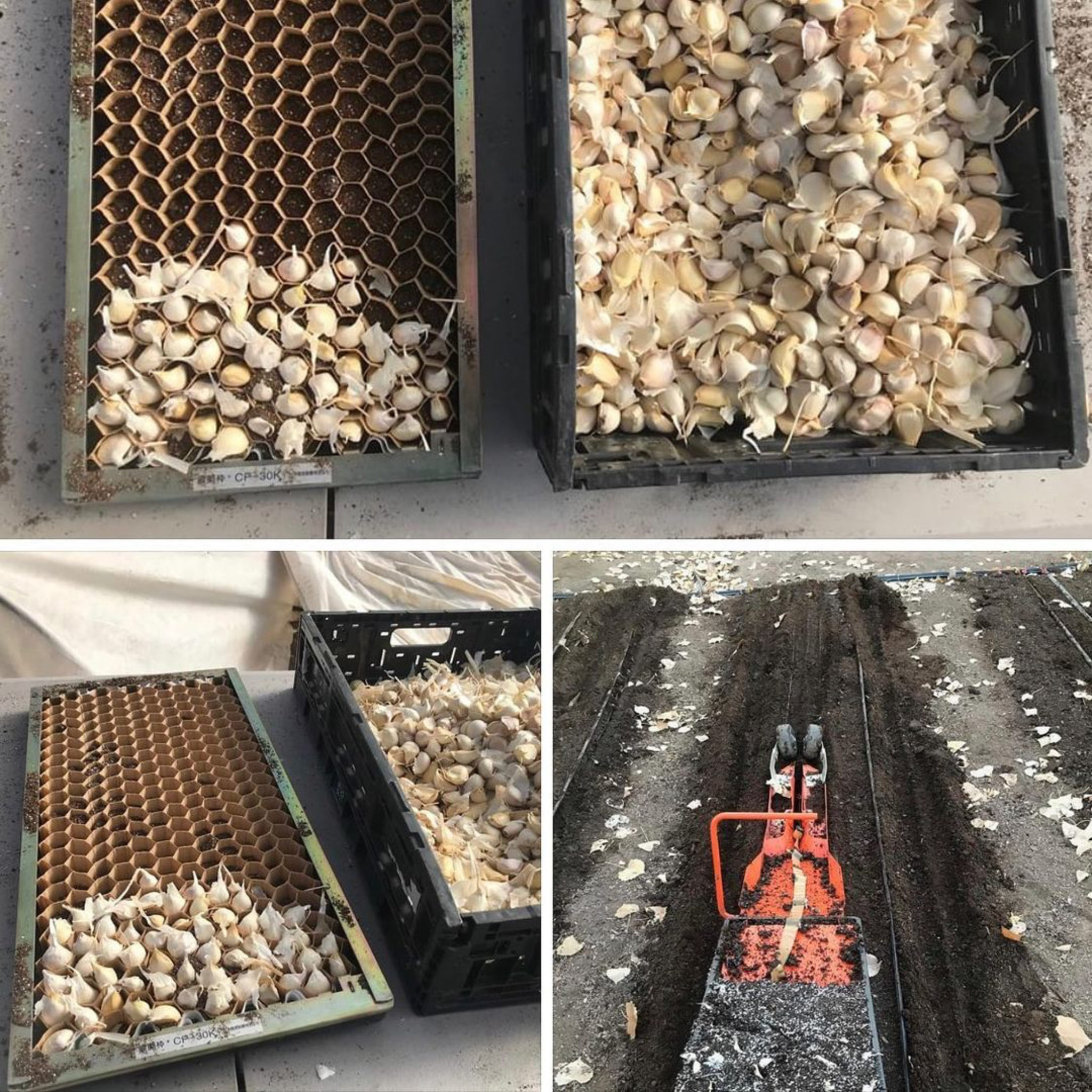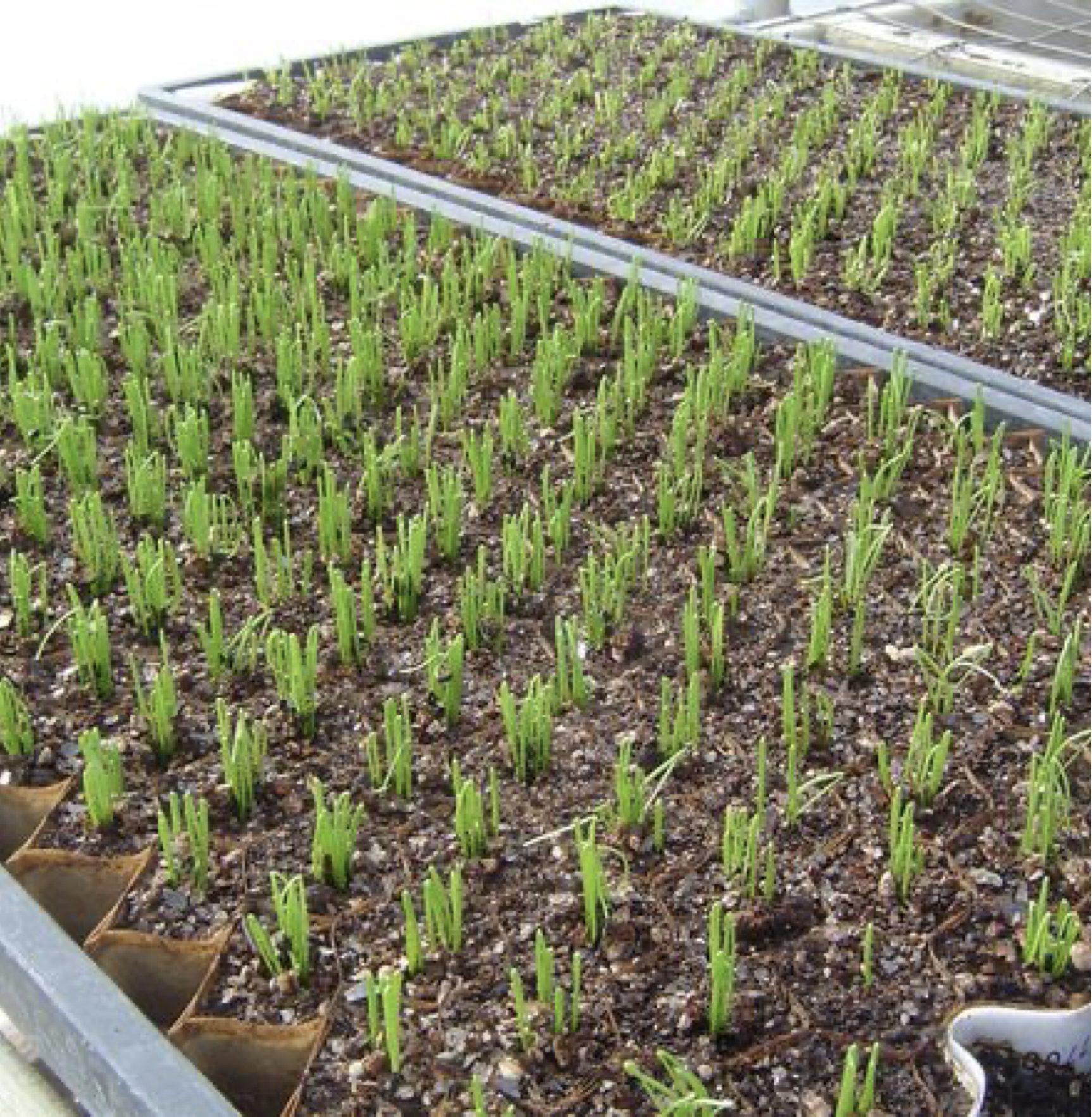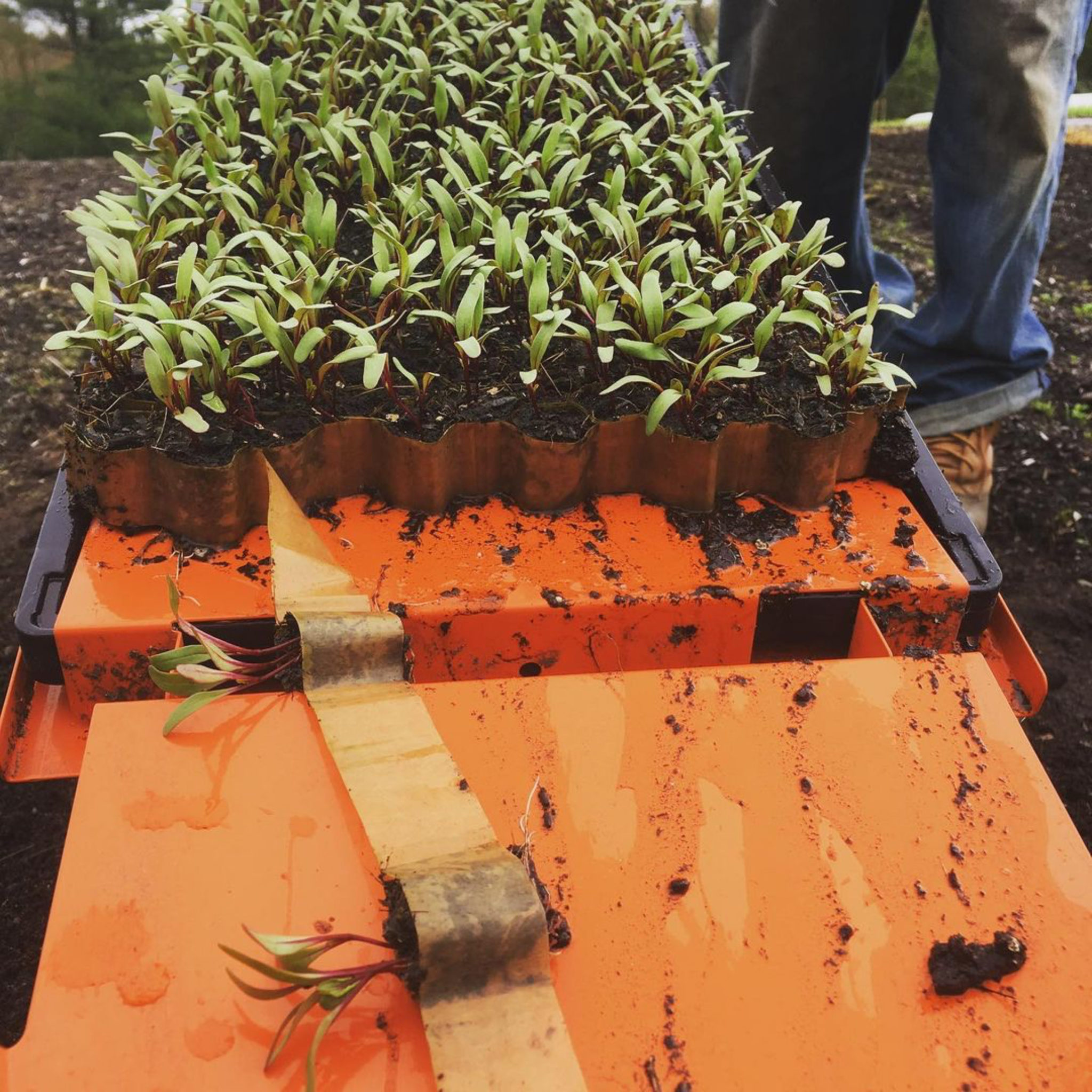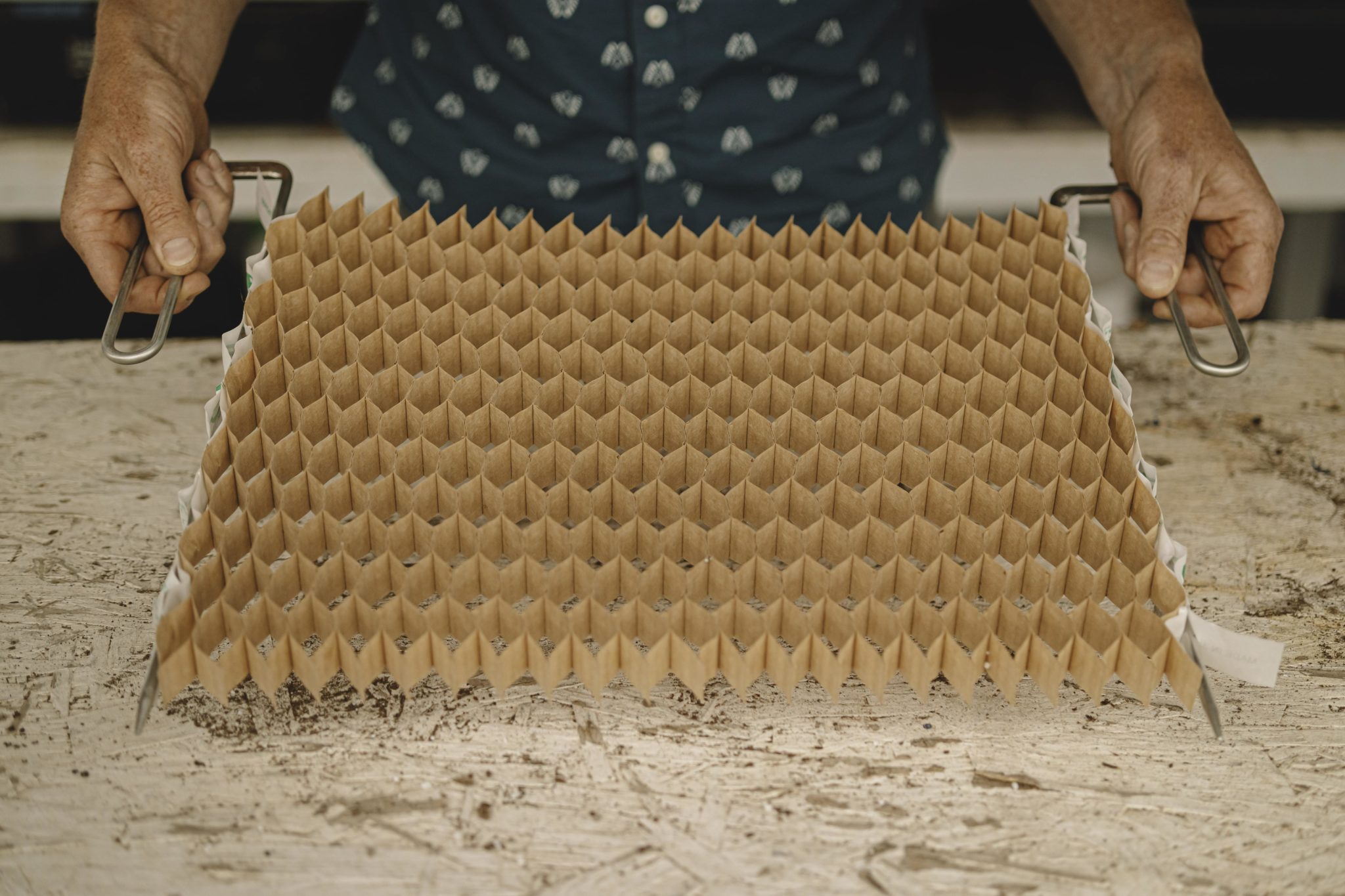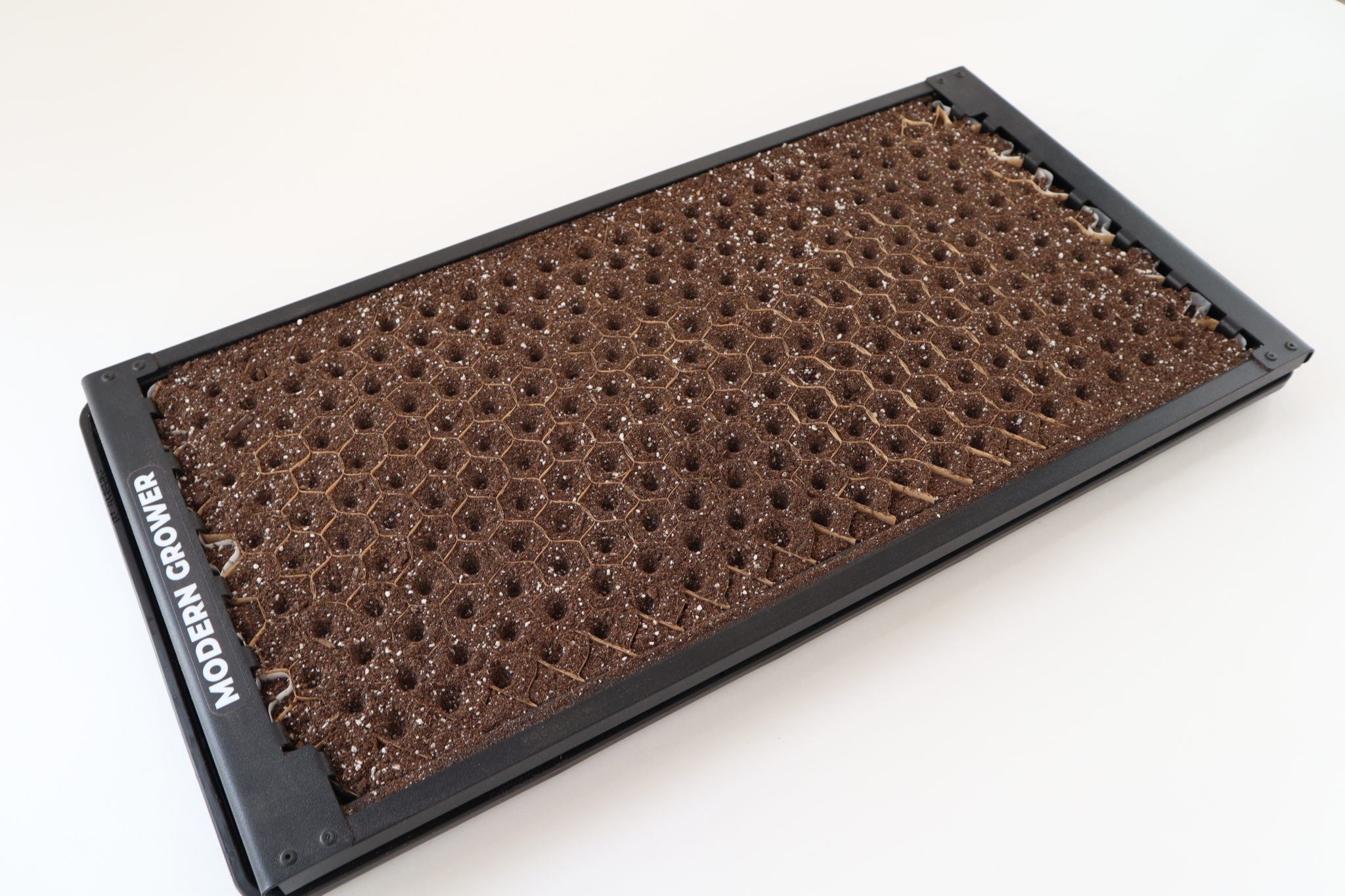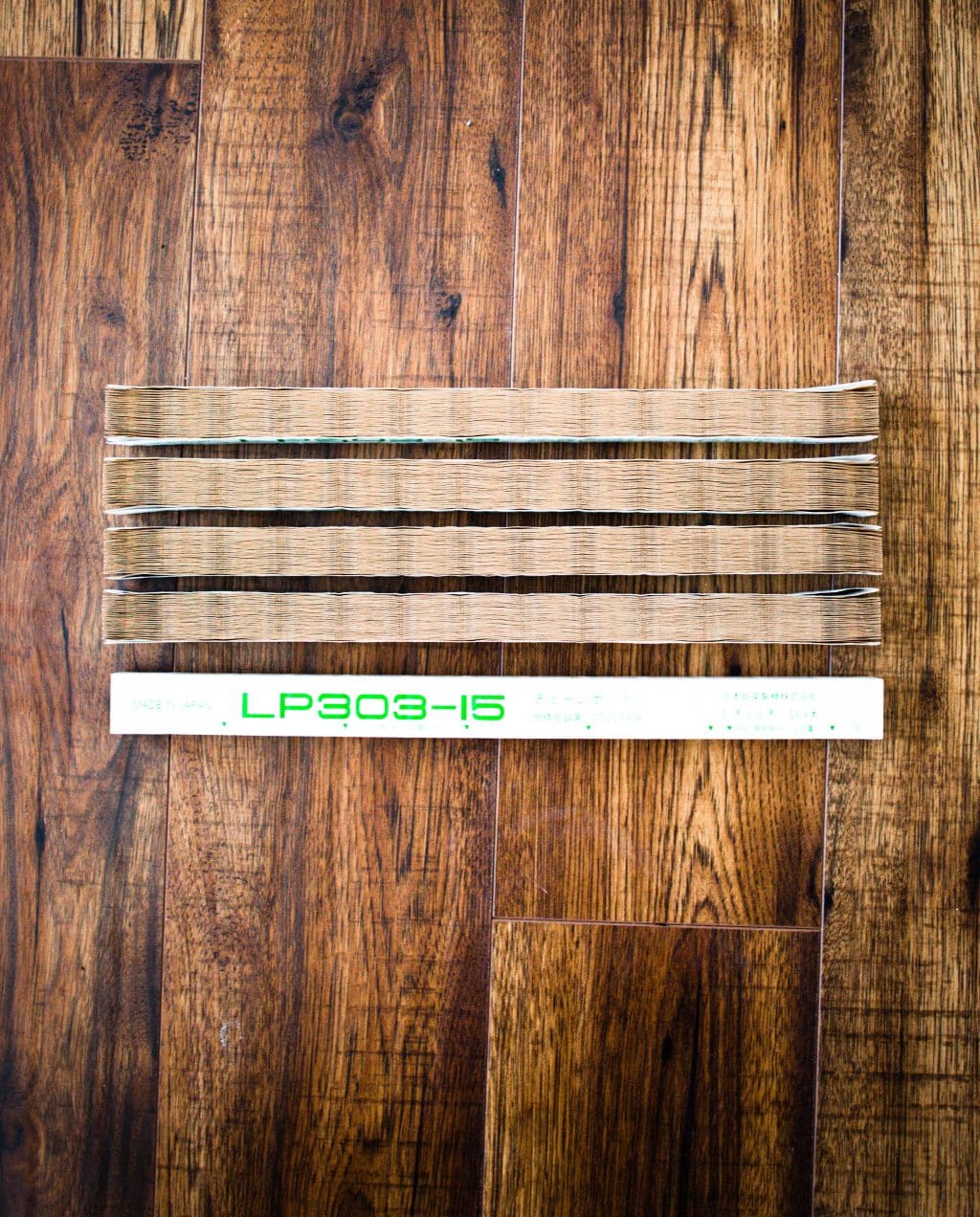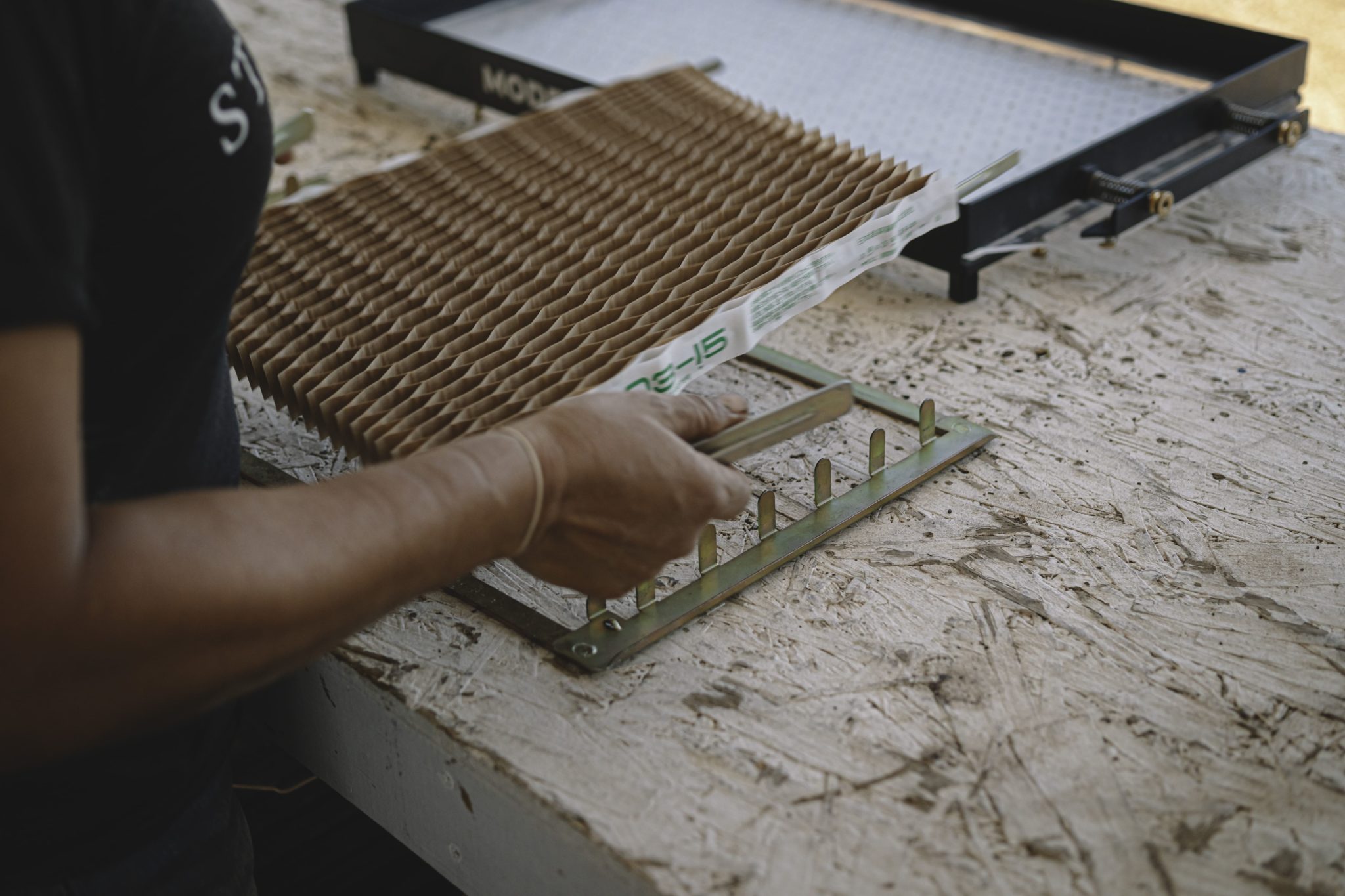Paper chain pots (also called paperpots or paper pots) are a nursery and planting system that makes it easier for farmers to grow and transplant vegetable, flower, and herb seedlings.
What Are Paper Chain Pots?
Paperpots are hexagon-shaped paper cells (pots) that are connected by paper strips to form a continuous chain when stretched out.
Each paper chain has 264 cells. Each individual cell in the chain is 1.2” deep and 1.2” wide. Other sizes are available, but this is the most commonly used one.
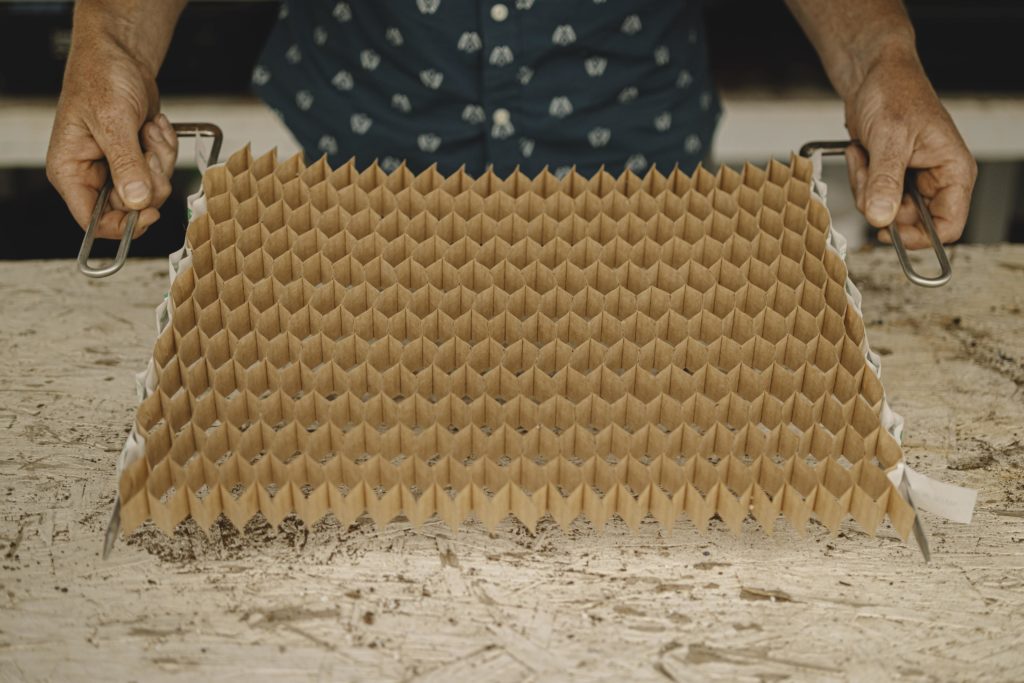
Paper chains come in three different spacing options: 2”, 4”, or 6”. These different spacings represent the distance between each pot in the chain when stretched out. These spacings between pots are designed to accommodate the various in-row spacing needs of different crops.
Regardless of the in-row spacing, all paper chain pots come with 264 cells (or pots) per chain. The length of the chain simply varies according to the spacing. A paper chain pot with 2” spacing between pots is 49.5’ long, while 4” spacing between pots is 93’ long, and 6” spacing between pots is 139’ long. In other words, the closer the spacing between pots, the shorter the length of the paper chain.
Farmers can also achieve different spacing options like 8″ apart and 12″ apart by skip spacing or seeding every other cell in a 4″ chain and a 6″ chain respectively.
Note that the term “paper chain pots” usually refers to the chain of pots rather than to the individual cells and the term is used interchangeably with “paperpots”.
What Are Paper Chain Pots Made of?
Paper chains are made of unbleached kraft pulp and adhesives. They contain no gloss, dye, or inks. They are biodegradable and are designed to decompose naturally in the soil after planting.
The Japanese manufacturer (Nitten Paperpot) has certified that their paper chain pots sold in the North American market do not contain any fungicides, preservatives, or fumigants.
Nitten uses two types of adhesives in the production of paper chain pots: water-soluble and water-insoluble. The water-soluble adhesive (vinyl acetate resin) dissolves and completely washes out over time as the pots are watered in the nursery greenhouse. This is, by design, allowing the paper chain to unfurl when it is later transplanted into the field.
The insoluble adhesives (ethylene-vinyl acetate and acrylic acid ester polymer) that do not dissolve keep the paper cells intact. Although the adhesives are synthetic, the materials are non-toxic and do decompose in the soil over time.
Are Paper Chain Pots Permitted on Organic Farms?
Possibly. In April 2021, the NOSB voted unanimously in favor of the NOP rule change that would allow paper chain pots on organic farms. The NOP still has to write and publish the rule to make it official. In the meantime, Paper Chain Pots could be allowed on Certified Organic Farms, but it is up to each certifier to make their own determination. Please check with your certifier to see if they allow paper chain pots in organic production. Meanwhile, the paperpots are accepted for use on Certified Naturally Grown farms.
Canadian Organic Standards (COS) has not yet come to a consensus of approval for paperpots, which means they CANNOT be used on organic farms in Canada.
The following is an excerpt from the formal recommendation of the NOSB to the NOP (National Organic Program):
The proposal for paper-based crop planting aids elicited numerous comments about the critical need for these materials to support smaller organic growers. While hand planting, machine planting, and other methods may provide some alternatives to paper planting aids, these types of aids fill specific niches that alternatives do not. The Board found that paper-based crop planting aids complied with the OFPA criteria for minimal environmental damage. They also enhance human health for small growers by eliminating the often back-breaking work of transplanting very small seedlings. A system of organic agriculture is enhanced by these aids since they allow a certain segment of small growers to participate in organic certification. These growers often direct market and provide a ready means of local organic produce to their markets and are invested in maintaining a healthy ecosystem. Source: USDA.gov
A Brief History of Paper Chain Pots
Paperpots were first developed in 1962 by a Japanese company called Nippon Beet Sugar Manufacturing Co., Ltd., located in Obihiro, Japan. The original versions were individual, non-chain-style paper pots. The company’s primary objective was producing refined beet sugar, and the paper pots were invented to increase the efficiency of that pursuit.
Non-chain paper pots are still produced and used today, primarily for larger crops that require a bigger cell and that are typically planted 12” or more apart.
It was not until 1992 that the revolutionary paper chain pot, along with the first paperpot transplanter, was developed and commercialized by Nitten Paperpot, which is a division of Nippon. To this day, Nitten is still the producer of paper chain pots at their Shimizu Paperpot Factory in Japan.
What Crops Can Be Grown in Paper Chain Pots?
Paperpots are most commonly used for closely spaced crops such as baby lettuce, salad greens, herbs, kohlrabi, onions, leeks, scallions, shallots, and many types of cut flowers. See our Paperpot Growers Notes for more information on specific crops.
They have also proven helpful in transplanting not ordinarily transplanted crops, such as beets, turnips, carrots, spinach, fennel, peas, beans, corn, cilantro, and others. These crops are traditionally sown directly in the field. However, near-perfect germination is much more attainable in a controlled greenhouse environment with the aid of heat mats, fans, and germination chambers.
Not only does this approach free up real estate in the field to grow other crops while the transplants are growing in the nursery, it also allows farmers more time to prepare weed-free beds. Growers commonly use flame weeding or silage tarps to achieve a weed-free environment, giving seedlings started in paperpots a solid head start.
How Are Paper Chain Pots Used?
Paperpots are intended to be used with the Paperpot Transplanter, an innovative, low-tech machine that saves farmers from spending hours on their hands and knees in the field.
With this system, the farmer loads a tray of paper chain pots into the Paperpot Transplanter and pulls the machine down a row in a standing position. The transplanter opens a furrow, feeds in the paper chain pots into the ground, closes the furrow, and tamps down the soil — all in one pass. A single person can plant 264 transplants in a few minutes without even starting an engine.
Paperpots are shipped compressed. The grower expands the compressed chain, places it into a plastic nursery tray, and fills it with potting soil (also called potting mix). One paper chain pot, when expanded, is designed to fit perfectly into one plastic paperpot germination tray, which is approximately 24”x12”x1.5”. Once filled, all 264 cells can be seeded simultaneously with the Kwik Klik Drop Seeder.
The seeded trays are then watered and kept in the nursery until the plants have matured to the ideal transplant stage. Once mature, the trays of paper chain pots are transplanted into the field with the Paperpot Transplanter.
How Long Can Paper Chains Last in the Nursery?
Once seeded, paperpots can hold up in the nursery for 3 to 6 months. Any longer than this, the paper will degrade and impede the performance of the transplanter.
How Do You Remove the Paper Chains after Harvest?
For most short-season crops, the paper chain pots will not have adequate time to decompose in the soil. Once a bed has been harvested, rake up the remaining paper chain pot debris and add it to a compost pile with other organic material. Leaving it in the field can lead to entanglement issues when trying to plant out the next crop with the Paperpot Transplanter or precision direct seeders.
If you do leave the paper chains in the field, the decomposition time is approximately one year, depending on local soil and environmental conditions.
Relevant Links
Paperpot Growers Notes | Why Use the Paperpot Transplanter | Growing Flowers with the Paperpot Transplanter

